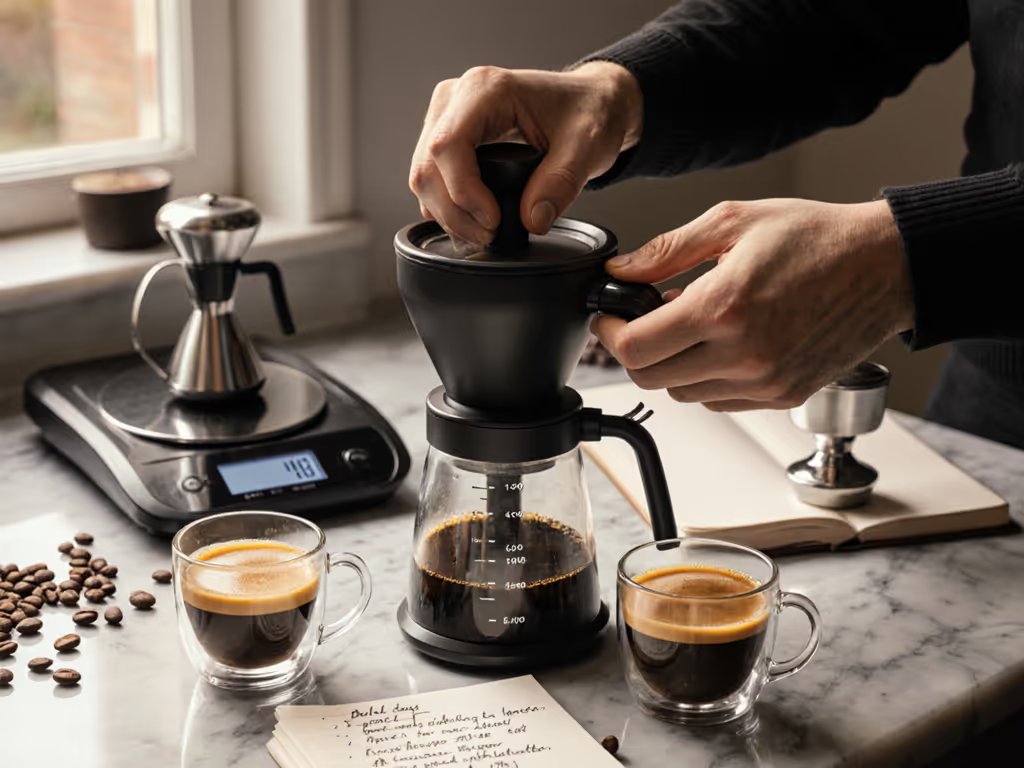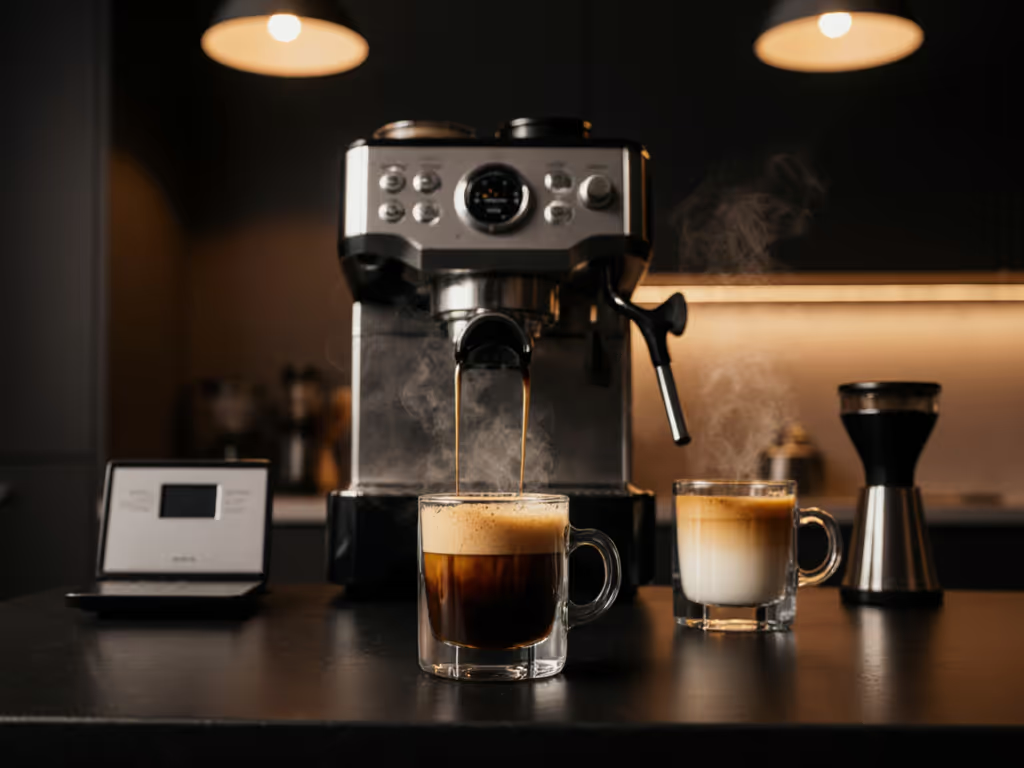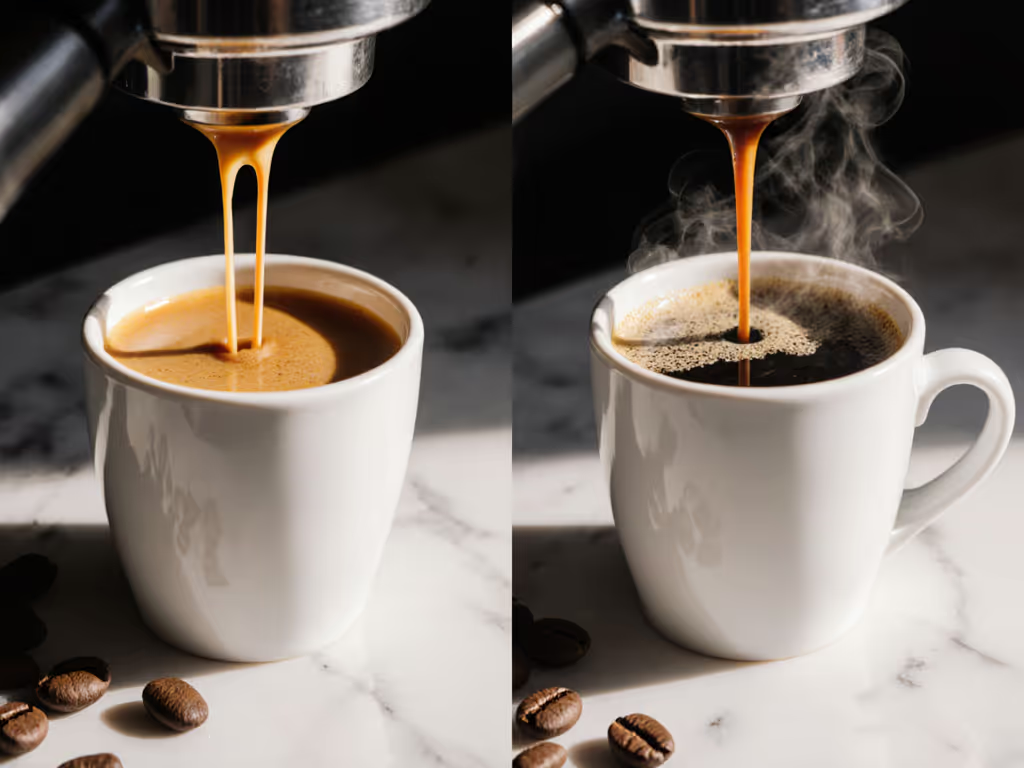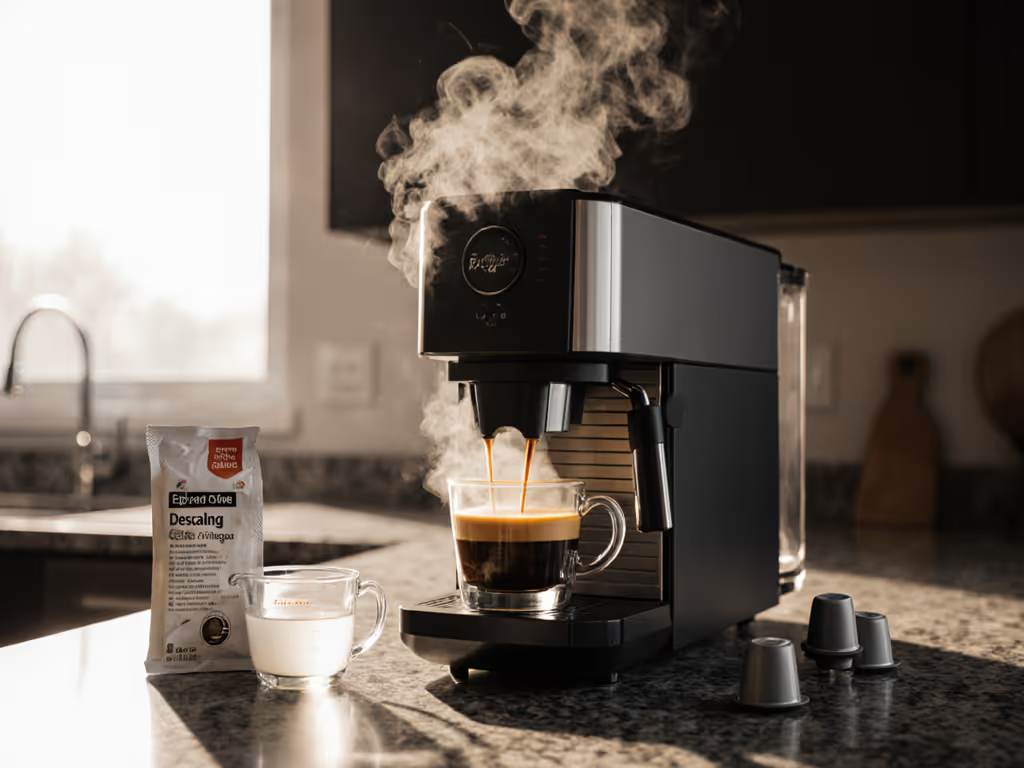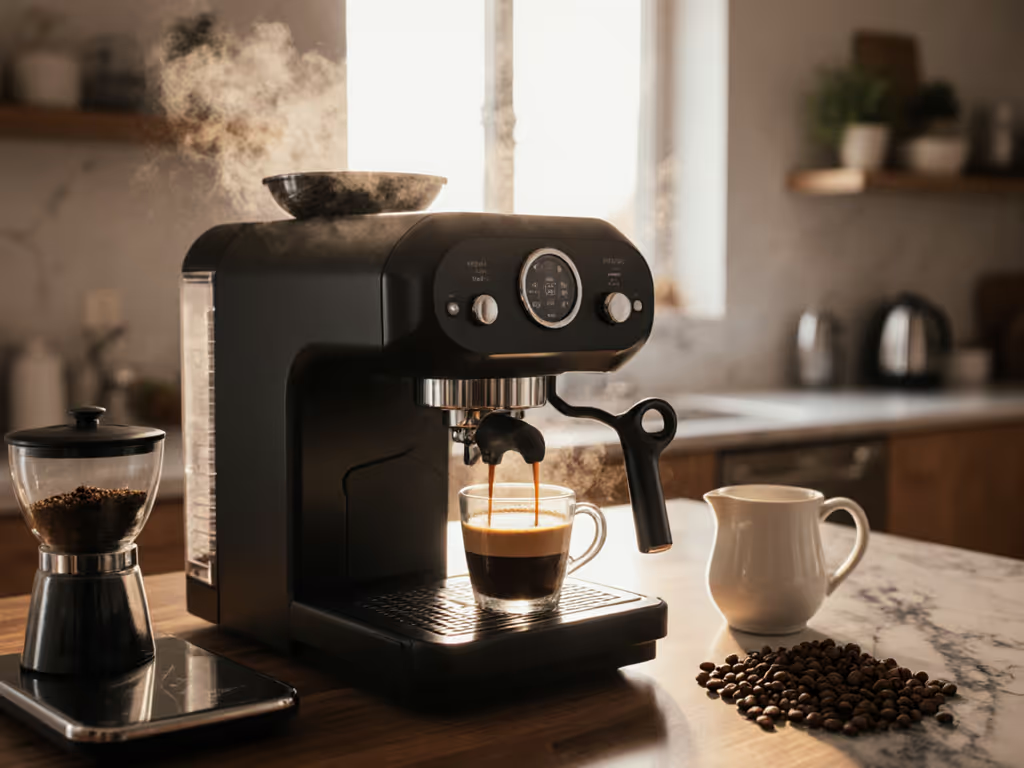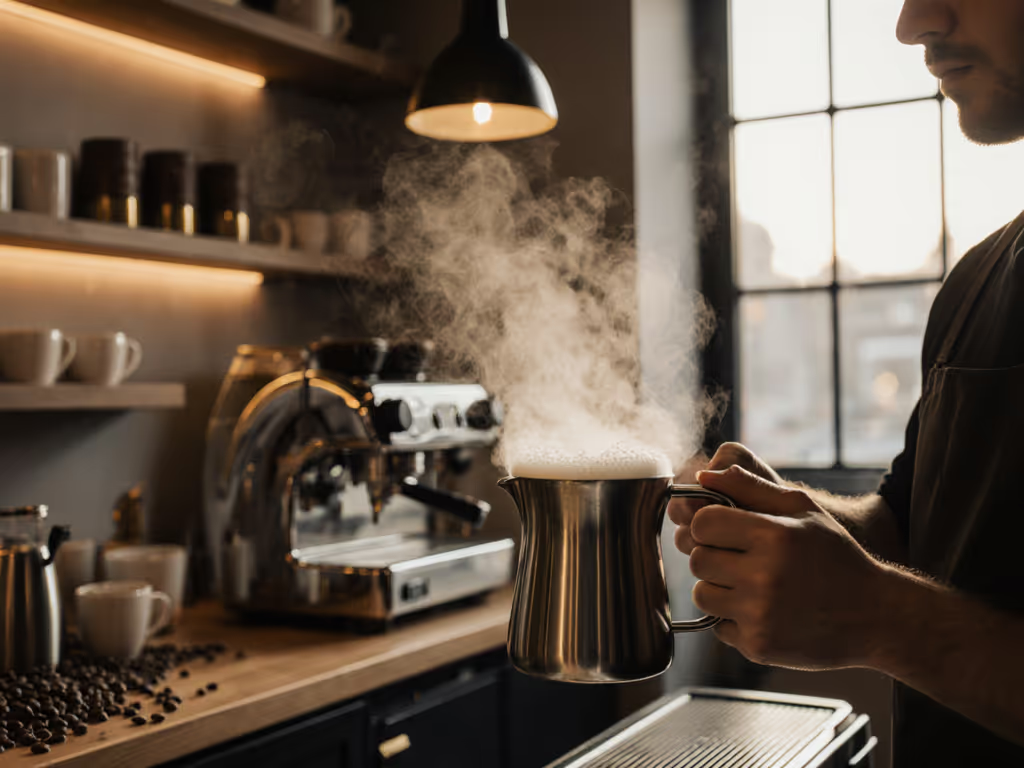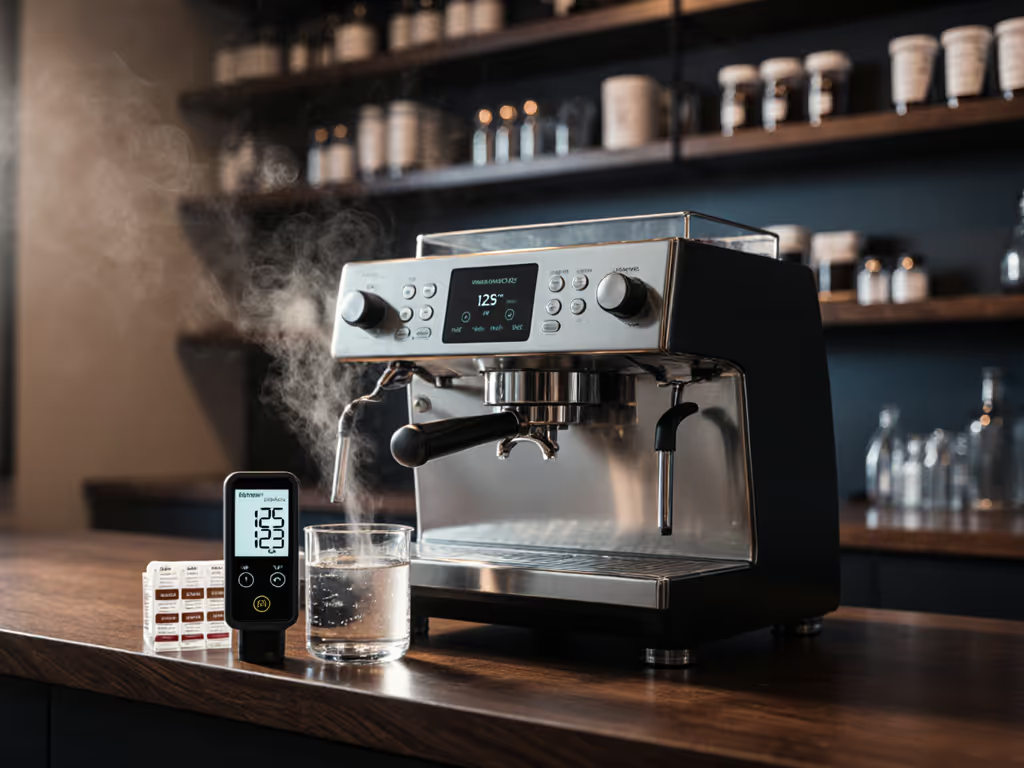Let's cut through the noise: espresso troubleshooting shouldn't feel like solving a Rubik's Cube blindfolded. As someone who's watched countless home baristas freeze at their grinders, I know that frustration. The good news? solving espresso problems is entirely within your reach. It's not about fancy gear or barista school secrets, it's about bounded choices and defaults that build confidence. I've seen beginners transform their morning chaos into calm ritual simply by focusing on three anchors: dose, grind, and time. When you eliminate variables, you eliminate doubt. Constraints don't stifle your craft, they create it. Which is why this guide skips jargon and gives you a repeatable path to dial in like a pro. Because at the end of the day, you deserve bounded choices, repeatable shots (taste you can set a clock to).
Why This Works for Real Home Routines
Forget cafe-style guesswork. You're juggling family mornings, tight counter space, and maybe 10 minutes before work. My framework is built for your reality: no pressure profiling, no 20-step rituals. Just sensory anchors (sweet, bitter, flat) and three calibration checkpoints that work in any home machine. I've tested this with engineers timing grind adjustments on phone stopwatches and parents fitting shots between school drop-offs. When you nail the basics, everything else clicks. For a step-by-step walkthrough of dosing, yield, and timing, see our dialing in espresso guide. Here's how to fix the five most common issues (with solutions that respect your time and sanity).
1. Why Is My Espresso Sour? (And How to Fix It Fast)
Your symptom: Sharp, acidic, watery shots with pale crema that disappears too fast. It tastes like lemon juice in coffee (not the bright acidity you want).
What's really happening: Under-extraction. Your water rushed through the puck too quickly, grabbing sour compounds but missing the sweet, complex notes. Common culprits? Too coarse grind, low dose, or pulling shots in under 22 seconds. (Especially with lighter roasts!)
Your fix in 2 minutes:
- Grind finer (just 1-2 clicks on most grinders)
- Increase dose by 0.5g (e.g., 18g → 18.5g)
- Aim for 25-30 second shot time from first drip
Calibration prompt: If it's still sour after one adjustment, check your coffee freshness. Beans older than 3 weeks post-roast lose solubility, meaning even a perfect grind won't extract properly.
2. Bitter Espresso Fix: Stop Over-Extraction Now
Your symptom: Harsh, ashy, or "burnt" flavors with thick, syrupy texture. The crema might look dark and dry. It's not "strong", it's overdone.
What's really happening: Over-extraction. Water lingered too long, pulling bitter compounds from the very end of the extraction. This screams too fine a grind, overdosing, or shot time beyond 35 seconds.
Your fix in 2 minutes:
- Grind coarser (go 1-2 clicks coarser for immediate relief)
- Decrease dose by 0.5g (e.g., 20g → 19.5g)
- Target 25-30 seconds, stop the shot if it blondes early
Pro tip: If your machine runs hot (check group head temp!), coarser grind buys you time without scalding. Remember: extraction isn't just time, it's time at stable temperature.
3. Espresso Channeling: Why Jets Form (And How to Seal the Puck)
Your symptom: Uneven flow, one side gushes while the other drips, or sudden stream "blonding" mid-shot. You'll see wavy streaks in the crema.
What's really happening: espresso channeling. Water found weak spots in your puck (clumps, uneven tamp, or poor distribution) and blasted through, over-extracting those paths while under-extracting others.
Your fix in 2 minutes:
- Break up clumps with a WDT tool (even a toothpick works!)
- Tamp firmly but level (no twisting or uneven pressure)
- Distribute first by shaking the portafilter side-to-side over the grinder
Sensory anchor: Channeling shots taste simultaneously sour AND bitter. That's water taking shortcuts through weak spots while missing dense zones.
4. Espresso Pressure Problems: When Flow Stalls or Surges
Your symptom: Shot starts strong then stops... or gushes uncontrollably. Group head pressure gauge (if you have one) swings wildly between 1-9 bars.
What's really happening: Inconsistent resistance. Could be blocked dispersion screen, old coffee oils gumming the shower screen, or inconsistent grind size creating air pockets. (Hard water scale buildup is a silent killer here!)
Your fix in 2 minutes:
- Backflush with water (3x 10-second bursts) if your machine allows
- Clean group head with a brush, no soap!
- Run grinder 5 seconds after adjusting to clear old grinds from burrs
Calibration prompt: If pressure spikes after 15 seconds, your grind is too fine, water can't penetrate the puck evenly. Back off 1 click.
5. Why Shots Are Inconsistent (And How to Lock In Reliability)
Your symptom: Same settings, wildly different results day-to-day. Today's shot is balanced; tomorrow's is sour. You're not imagining things!
What's really happening: Uncontrolled variables. Ambient temperature shifts, humidity, or (most commonly) inconsistent grind retention in your dosing chamber. Home grinders struggle here, especially budget models.
Your fix in 2 minutes:
- Dose by weight (never by volume; a 0.2g shift changes everything)
- Discard first 3g of grounds after grinding (they're retained and stale)
- Pre-heat portafilter by running a blank shot daily
Sensory anchor: Consistent shots hit the same sweetness peak at 20 seconds. Track this, not just taste, for true repeatability.
Your New Confidence Starts Here
Remember that beginner who froze at the grinder? He didn't need 100 variables (he needed three: dose, grind, time). By narrowing your focus to calibration prompts you can measure (not just taste), you turn anxiety into action. That's the magic of bounded choices, repeatable shots. No more wondering "why is my espresso sour?" or frantically Googling "bitter espresso fix" at 7 a.m. You've got a system. Now go write those settings on a card, stick it to your machine, and own your morning ritual. Because great espresso isn't about perfection, it's about dependable flavor, brewed your way.
Further Exploration: Grab a notebook and track just one variable for a week: shot time vs. taste. You'll spot patterns faster than any app. (And if you're still wrestling with espresso channeling or espresso pressure problems, revisit Step 3, I've got your back.)
